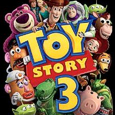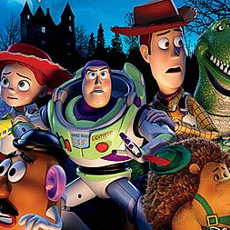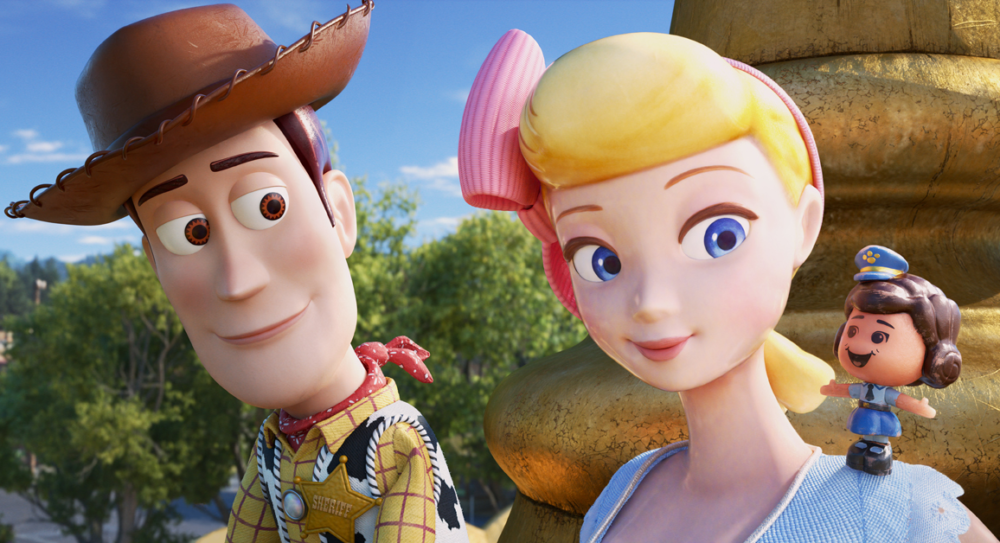Walt Disney Pictures/Pixar Animation Studios (1995, 1999, 2010), Walt Disney Home Entertainment (November 1 2011), 2 x 4 disc and 1 x 5 disc Blu-ray 3D Combo Packs (with Blu-ray, DVD and Digital Copy) as detailed below, including extensive supplements, 1080p high definition 1.78:1 widescreen, DTS-HD Master Audio 5.1 and 7.1, Rated G, Retail: $49.99 each
Storyboard:
In the bedroom, where toys naturally come to life when we humans are not around, young boy Andy’s favorite toy, Woody the Cowboy, has to contend with the arrival of all-bleeping, all-lighting spaceman action figure Buzz Lightyear. In the first sequel, Woody’s real value is discovered by a devious toy collector, who takes Woody without permission, leading Buzz and Andy’s other toys to leap into action and venture out into the world to save their friend. Then, third time around, the toys leap out of the toybox to find themselves at a curiously perfect day-care center, where not everything, or all the welcoming toys, are what or who they seem…

The Sweatbox Review:
Toy Story (81 mins)
There are no two ways about it: on its release in 1995, Toy Story was a groundbreaking film that influenced the industry to such an extent that it changed the shape of movies. Without it, animation would never have made the giant leap to CGI fare that dominates the marketplace nowadays, and, for good or bad, just as another pioneering animated film, Snow White And The Seven Dwarfs, set the template for animated features from the 1930s onwards, Toy Story laid the foundations for animation – particularly of the computer generated kind – to lean towards family orientated, smart-aleck comedies. And, just as Snow White had been a huge gamble for Walt Disney, the creators of Toy Story, lead by director John Lasseter, didn’t know if what they had would be a hit or a miss.
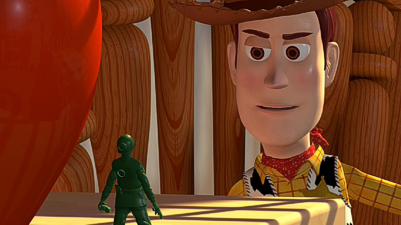
But, from the opening frames (which on this release have been unfortunately toyed with – see the video comments below), Toy Story was going gangbusters to present something new to audiences, from the newly three-dimensional Disney castle logo and, in particular, the different approach to the song sequences: instead of breaking into song, the characters’ inner monologue is represented through the music of Randy Newman, Lasseter’s favorite singer-songwriter, responsible for some of the most noteworthy scores of recent times. He brings his now recognizable mid-western Americana feel to the music and, especially the songs, which break tradition in the way that others would follow in other Disney films. Some of Newman’s music may sound self-referential at times; in particular the opening You’ve Got A Friend In Me, a paean to relationships that takes on multiple symbolism over the two films, is a little too close to I Love To See You Smile from Parenthood, the two songs’ arrangements being almost interchangeable.

However, that’s a minor gripe, and the rest of the time Newman perfectly captures the mix between Woody’s America and Buzz’s whimsical action ambitions, with a heartbreaking song, I Will Go Sailing No More, that is incredibly bettered only by the emotional resonance of When She Loved Me in the second film. This new approach is also matched by the characters and plot: fairly simple and perhaps relying a little too much on its characters in retrospect but hitting home all the same. Somehow, the characters come through with a little more rounded personality than might have been the case in animated fare before, though chiefly this is the result of a little “cheat”: the hiring of instantly recognizable personalities that help to provide more context to their roles.

Although this led to a series of high-profile “stunt castings”, Toy Story ran with the idea, producing a test sequence of a prototype Woody to enlist the services of Tom Hanks, the then-Oscar winning star of Philadelphia and soon to be another winner for Forrest Gump. Hanks was sold, and the film picked up traction, bringing on board the lead of Disney’s own smash hit comedy show Home Improvement, Tim Allen, the personable know-it-all who then launched a successful big screen career of his own in such films as Galaxy Quest and the Mouse House’s Santa Clause series. Hanks and Allen bring their self-assured good natures to Woody and Buzz, providing them with an instant likeability that, it has to be said, accounts for a huge amount of the audience’s goodwill towards the knockabout characters and comedy.
Coupled with the still immensely impressive visuals, it all ads up to a highly entertaining groundbreaker; indeed, if there’s one important animated film of the past 20 years that can rightfully be labelled a true classic, it’s Toy Story, a film that, to repeat its most celebrated line, soars “to infinity…and beyond!”

Toy Story 2 (92 mins)
Less than five years later, the Pixar team were able to do it all over again – and actually better! – for the inevitable Toy Story 2. In animation terms, sequels didn’t used to come along everyday, and that the film, after its troubled stop-start production, quickly became known as The Godfather Part II or The Empire Strikes Back of animated films is pure and simply down to the writers being freed of the DTV pitfalls and able to run with their wildest ideas. CG innovation was being expounded upon with each new short film or feature, and Pixar was able to let their characters out of the bedroom and into the wider world.
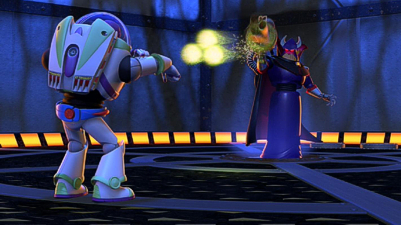
Actually, The Empire Strikes Back is a good title to invoke in talking about Toy Story 2: just like Lucas’ continuation of his space saga, this film does nothing but build on everything the first film did so well. It recognizes the audiences’ love of Buzz Lightyear, but its affection for Woody the Cowboy, and slots in multiple moments for both to shine (but never outshine each other) as well as introducing new characters, including one that complements both heroes perfectly and provides both the emotional heartbeat of the film and an enthusiastic female that girls can connect with.

From the barnstorming outer space adventure opening, in which we find Buzz on a sci-fi reference-heavy encounter against the evil scourge of the universe, Emperor Zurg (later used in another, intentionally obvious, reference to Empire) to the gut-wrenching revelation of Jessie’s past and the final, jaw-dropping chase through an airport, Toy Story 2 is, basically, Toy Story-plussed. Even though it’s a good ten minutes longer than the first film, it’s full of economic storytelling and, again, some wonderful characterizations. All the major players are back to voice them, including Hanks and Allen who, on the posters that proclaimed “the toys are back in town”, got actual above the title billing, a rarity in animation at the time, but yet another aspect of name casting that’s all-too overused now.

Though barely over ten years old, Toy Story 2 is also destined to become a classic animated film. Pixar’s movies are always stunners, and there have been some true marvels since these two initial Toy Story movies appeared, but there’s something about working with these characters that brings out an extra level to their relationship with them. Despite what has come from the Studio since then, I wonder if Toy Story 2 still isn’t the most finely-tuned computer animated film yet to have been released? Like Star Wars, we know and love the original for being something so completely new and different, but this Toy Story equal of Empire takes that newness and gives us something different again (even Toy Story 3 can’t touch it).
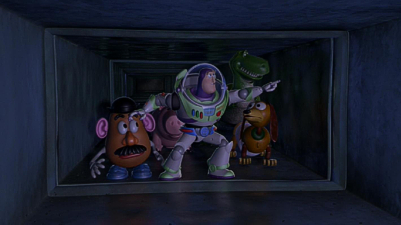
Perhaps it’s because these characters were the ones that built Pixar Animation Studios into what they are today that the story artists and animators relate to them so well. Like toys themselves, you never forget the first of favorites you had, or the love and care you gave them. The audience for the Toy Story films is like that too: there’s an unspoken acknowledgement that these were the first of their kind, and they’re stories and characters we will repeatedly return to and will always have a soft spot for.
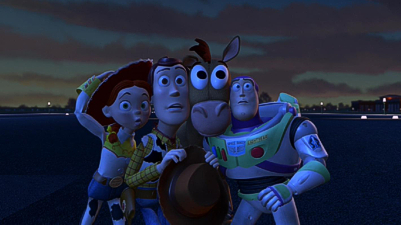
Toy Story 3 (103 mins)
An appreciative audience – regardless of the length of time between releases – was exactly what turned up when the third trip to the big screen for Woody, Buzz and company finally made it to the screen after an almost now-standard troubled production period for a Toy Story movie. Personally I have to admit that, despite the fact that it is hugely entertaining and, at times, emotionally compelling, it’s a film that I just wasn’t sure needed to be made, whether by Disney’s own bargaining tactic sequel factory Circle 7 Animation (at one time destined to produce sequels to Pixar’s pictures, with a plot that had defective Buzz Lightyears being recalled to Japan, only for Woody and the team to head out on a rescue mission), or indeed by Pixar themselves.

Original series creator and director John Lasseter envisioned a third chapter would end with the characters cared for and being played with by children – after all, that’s what toys are for – and as soon as the ink had dried on the contract that merged Disney and Pixar, Circle 7 was closed and Toy Story 3 was put in the hands of part one’s editor and part two’s co-director Lee Unkrich. I’m sure he and his story crew quickly found that threequels are notoriously hard things to pull off: there’s the pressure of matching up to a beloved or successful first film as well as not repeating the tricks that had already been played in overcoming the same problems with the difficult second outing.

But this is certainly the case for me with Toy Story 3, which feels like we’re being treated to the best core elements of the first two films again, as opposed to really expanding the characters and story experience. The return to a single location for much of the film echoes Andy’s room from the first film, while much of the plot’s kidnap and rescue elements re-run the second film with Woody as hero instead of Buzz. That’s all fine, as long as there’s something new to hold it together, but it’s not there in what is merely a collection of moments that too strongly recall better sequences in not only the first two films, but other Pixar pictures too.
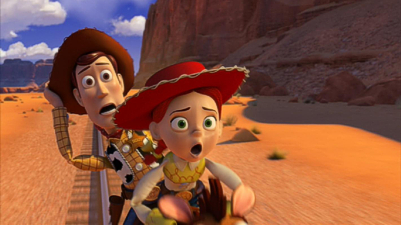
So, after Woody’s western shootout from the first film and Buzz’s intergalactic mission of the second, in the opening “real” adventure sequence, now a Toy Story trademark, we get a dual setting opening, combining Woody’s west with Buzz’s superheroics and a surprise alien attack. It’s good, exhilarating stuff, but we’ve seen similar before, at the end of the second film, which very cleverly spoofed the western movie shots of John Ford and the like, and many of the same are basically repeated here straight in, including music cues from that previous sequence. More still, there’s a hyper sensitivity that feels a little too manic, as if they know they’re repeating themselves but feel if they make it bigger, faster, funnier, no-one will really notice.
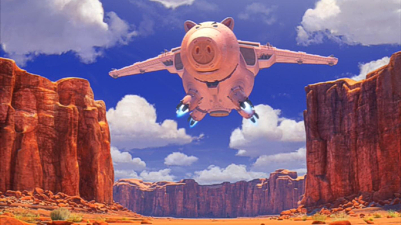
It’s just that, for me, that second film nailed it so completely: the last lines referring to what would happen when Woody and Buzz’s owner Andy grew up and didn’t need them anymore. “I’ll enjoy it while it lasts”, says Woody, ending the film on a perfect note and providing a definite close to the adventures of Woody and Buzz, the last word on what could be done with the characters and that particular story. The western/spaceship opening didn’t do much to allay my fears, but the following scenes managed to change my mind: seeing Andy growing up via the miracle of home movie videotape, I suddenly “got” it…Woody was going to enjoy it while it lasted, and now we were going to see what would happen when it ended.
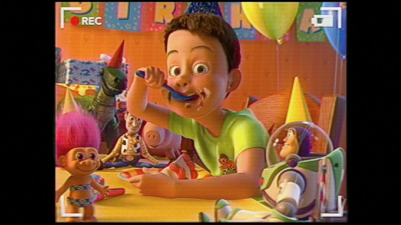
Unfortunately, just as fast as I’d finally tuned in, my interest began to waver again, once the toys have been shipped off to the Sunnyside day-care center and the film comes to something of a halt. It doesn’t help that new lovable day-care character Lotso, the supposedly huggable bear, is clearly not to be trusted, and therefore becomes a retread of Prospector Pete from the second film, while an overly pop-culture reference when Barbie meets the day-care’s Ken doll for the first time is the kind of thing that’s been done to death. The rest of the film continues to run along re-running themes from the first two films: Woody is disassociated from the rest of the group, Jesse has abandonment issues (actually, quite annoyingly), and Lotso’s backstory echoes the similar treatment of Jesse’s from the second film.
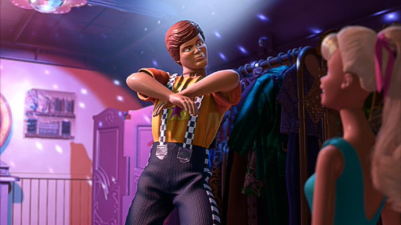
Even Buzz makes another transition, though having done the practical switches with the character previously, a dubious as yet undiscovered “feature” of the Lightyear action figure sees him reset first as a Space Ranger and then later as an Spanish-speaking lothario…again funny while it’s happening, and probably hysterical when it came up in the story meetings, but just not true to the character (an end credit extension of this joke, a Spanish version of You’ve Got A Friend In Me, again seems like a desperate play to do something “different”, if not actually original or clever, with the series’ stock trademarks, almost as if Pixar is selling out their characters for cheap laughs). And that, ultimately, is the real predicament over Toy Story 3. It’s all perfectly well made, amusing in spots, tremendously layered and often surprising in how downbeat it is.
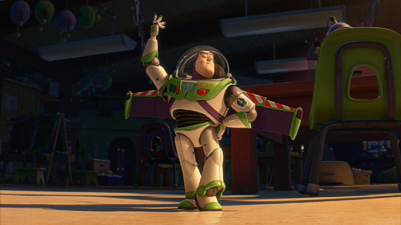
In fact, if there’s one thing that can be said for the film in terms of moviemaking bravery, it’s that it is, at times, amazingly depressive. The downbeat tone begins almost immediately, with Woody lamenting the fact that Andy doesn’t play with the old gang anymore, and the toys they’ve lost along the way. It’s pretty heady stuff for what is ostensibly a “children’s film”, and remarkably reflective of the filmmakers’ new status as mature adults and parents themselves – this isn’t the Toy Story 3 that the team would have made ten or maybe even five years ago. But none of it feels particularly fresh, and the plotting gets bogged down in Sunnyside for far too long (the characters want to stay, then leave, then are forced to stay, try to escape, etc).
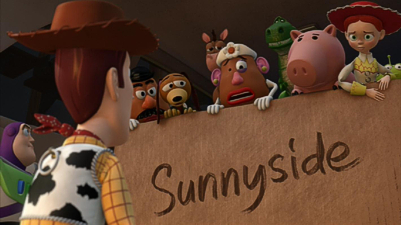
Of course, this being a Pixar movie, it’s not all a long slog, and there are moments that remind us that we’re watching a film from the best purveyors of family entertainment: Michael Keaton’s debut as Ken is brilliant, both from his vocal delivery and the deliciously teeny details in his animation…an excellent addition to the gang and one of the film’s best elements. And then there are the thousands of other little touches, and animation that continues to build on the previous films that reaches an exceptional level. The scary, cymbal-wielding monkey toy is also fantastically frightening, and a few times I was surprised that the film got away with a G-rating: if it’s not only pretty terrifying for younger children in parts, the mature themes and overall melancholic feel will surely need some parental warmth to help them through some of the tougher moments.

In particular, a typical Pixar conveyor belt ending has some tremendous added emotional depth in that the toys may have really made their last moves, a spot of purely visual storytelling where the characters face their doom not by shrieking or trying to save themselves, but by holding hands; a great moment that finally brings the characters together in a way much of the film has struggled to do. It is this penultimate sequence that pulls the film together, right at the last moment, leading to the film’s payoff, which does build on the ending of the second film: realizing that he’s really too grown up to keep his old stuff, Andy donates them to the day-care owner’s daughter, having one last play with them as he hands them over.
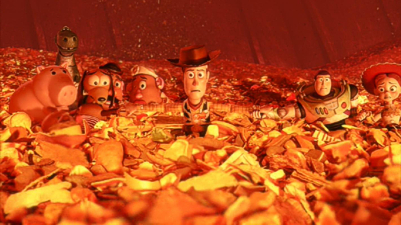
Ultimately, even if Toy Story 3 isn’t always successful as a piece of fresh moviemaking, it does hold up as a solid family feature film, though only just as a worthy addition to the otherwise untouchable first two films. In many ways, it’s as if Pixar has gone full circle in their feature length endeavors, coming back to the series that really started them off on a path to where several of their young names have “grown up” and are starting to venture out on their own and into the real world via major live-action projects. It’s always nice to spend some time in the company of characters you love, and even though I think Toy Story 2 provided a more than fitting conclusion to their adventures, over $1bn worth of audiences obviously thought they needed to see more.
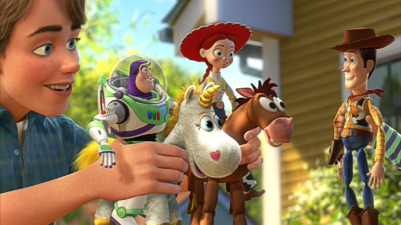
Hopefully Pixar won’t have caught the sequel buzz too much, and will have learned a lesson from this past summer’s slightly underperforming Cars 2. It’s nice that Woody, Buzz and all the characters got a final hurrah for a third film, but that a Toy Story 4 has already been rumored is a worry: if third time out didn’t capture the spark or real magic of before, what hope do continuing episodes have? And with all the complex emotions and serious natures of the mature themes already explored over three films, where can the series go from here? Maybe, as the recent Toy Story short Hawaiian Vacation showed, the answer might be to reset to basics and just have fun with the characters again? Because, for all Toy Story 3’s heavy attitude, I just can’t shake the feeling that the first two films’ charm is exactly because of their more easy going nature and effortlessly exceptional moviemaking.
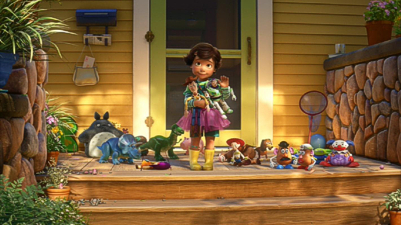
Having hopefully gotten it out of their system, Pixar needs to leave the funk behind and bring a bit more light back into the toybox: maybe there is room for Woody to save Buzz from a product recall after all? I can’t help but think something of more visual scope like an international mission to Japan is what is needed if the series is to continue with a revived freshness and bring back that authentic Toy Story energy. While the first film remains an animation benchmark and the third a fitting if routine conclusion of a three-act structure, it’s the second film, for me, that remains not only Pixar’s best animated films, but one of the best animated films from any Studio. That the trilogy on the whole is largely unique for retaining a consistent quality across all three films the likes of Shrek and Ice Age can only dream of is down to Pixar’s undoubtedly unique creativity.
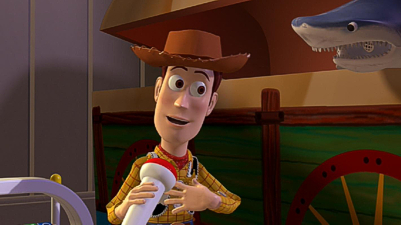
Is This Thing Loaded?
After VHS and LaserDisc releases, an Ultimate Toy Box triple DVD set, stand-alone DVDs, a double-feature collection and anniversary editions in the mid-2000s, it’s technically only the second time around for all three films on Blu-ray (not including several alternate packaging editions). There were Special Edition releases of the first two films came to BD in time for the theatrical release of Toy Story 3, and naturally the eventual release of that film on disc too, and it’s these same discs replicated in these new individual releases, now combined with 3D and Digital Copy discs in all three titles
A Trilogy set of just the 3D discs is also available for those that just want to update their collections without shelling out for the same discs again, but it’s in these three separate releases that all the extras have been carried over. Each of the Blu-ray 3D discs in the separate packs themselves don’t hold any specific bonus features, the space being given over to present the best stereoptical versions of the films possible, although it could have been cool to have included the first two films’ 3D theatrical reissue trailers without any cost to quality.
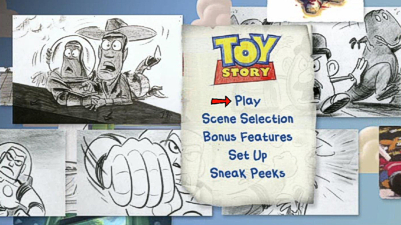
The regular Toy Story Blu-ray Disc is the exact same Special Edition as was released in the run up to the third film’s release, and although the previews have been updated, this means that the disc still includes a now rather redundant exclusive new peek at Toy Story 3, concentrating on The Story, a highly promotional featurette purely meant to build the hype factor. The rest of the disc retains all the Special Edition material of before, a mixture of then-“all-new” bonus features and old supplements that happily carried over most of the previously released DVD’s content in full, meaning that this is as comprehensive a collection of Toy Story mania as one could hope for. Of the newer Bonus Features, much of it is brief and fluffy, beginning with Buzz Lightyear Mission Logs: Blast Off, a 3:27 minute look at a NASA space station launch that has a film link via the Lightyear figure seen floating through various shots.
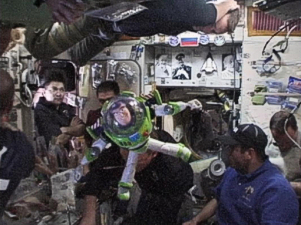
Of more interest, though still loose in Toy Story film terms, Paths to Pixar: Artists (4:49) introduces us to a number of Pixar veterans and the personal journeys they took before landing their roles at the Studio. A handful of Studio Stories are next, continuing the Pixar family theme, and John Lasseter’s Car (1:27) recounts the “humble death-box” car the director of Toy Story drove at the time of the film’s making. Studio Stories: Baby AJ (1:39) tells very amusingly of AJ Riebi’s lengths he went to in order to win the Studio’s Halloween costume contest, and Studio Stories: Scooter Races (2:16) elaborates on the famous Pixar culture of the artists zooming around the offices at speed, and the attempts to make it around the Studio in record time.
Buzz Takes Manhattan (2:13) is a retrospective moment from Lasseter as he expresses his pure joy at having a Lightyear balloon in last year’s annual Macy’s Thanksgiving Parade in New York City. With location footage from the parade, and Lasseter’s clear enthusiasm in check both as a parade walker and in talking head mode, it’s hard to resist this spot of spectacle.
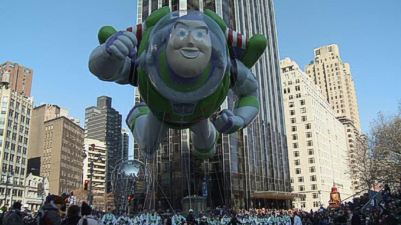
The last and most substantial of the new extras is Black Friday: The Toy Story You Never Saw, a 7:34 look back at the original version of the film as it was guided by the Disney executives of the 1990s. It’s not so frank as to upset those involved with the production, but there is an interesting emphasis on how the notes that the Pixar team received didn’t really do the film justice, and how things didn’t really fall into place until Lasseter and his senior team pulled the story back from the brink and worked overtime to present Disney with a plot and characters that worked. A slice of the reel that led to the Black Friday screening is then shown, although those with the original LaserDisc pressings may get a feeling déjà vu.
After this, many of the other LD and previous DVD supplements have been carried over, including the 1996 Audio Commentary featuring director Lasseter and his creative team. If you’ve owned any previous version of Toy Story on LD or DVD before, you’ll know what a great track this is – and it includes Randy Newman’s now cut intro music underneath the participants’ introductions. The rest of the material is all stuff fans may have seen before, here collected under the Classic DVD Bonus Features banner. It’s an impressive list of supplements, which for those without the Ultimate Toy Box or 10th Anniversary Edition will include a lot of “new” stuff, such as the 16-minute Filmmakers Reflect featurette from 2004, with Lasseter, Andrew Stanton, Pete Docter and the much-missed Joe Ranft remembering various production anecdotes.

Although these features have all been ported over in their original standard definition-only format, that does mean there’s a lot of space to include as much as possible, and the list is almost endless, from Making Toy Story (20:17) and The Legacy Of Toy Story (11:41), to Designing Toy Story (6:12) and almost 20 minutes of Deleted Scenes. Featuring eight sequences in various states of production, there are alternate openings (including one “Buzz Lightyear Show” that clearly influenced the start of the second film) and different takes on moments that ended up on screen, with selected introductions by editor Lee Unkrich. The Design section pulls in the wonderful still frame galleries from the LaserDisc set and presents them as a video slideshow accompanied by Newman’s music, covering everything from character concepts, 3D visualization turnarounds, and Color Script explanations and examples. All told, there’s almost another half hour to explore here alone.
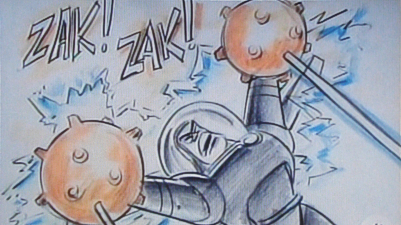
In Story, we get to see the pitch for the Green Army Men scene, Andy’s New Toy storyreel, and The Chase storyboard to film comparison, adding up to almost 14 minutes in total. There’s another 14 minutes to be found in Production, including a (out of sync) look at the stages of animation, layout tricks, and the sometimes hysterical Toy Story Around The World multi-language reel. In Music & Sound you’ll find Newman’s You’ve Got A Friend In Me music video featuring Lyle Lovett (2:15), a discussion on Designing Sound with Skywalker supreme Gary Rydstrom (6:35), and a complete set of Randy Newman’s Song Demos, a terrific 17:30 compilation of alternate, deleted and final songs, including both versions of Plastic Spaceman and its eventual transition to the quite wonderfully melancholic I Will Go Sailing No More, and an improvised You’ve Got A Friend In Me instrumental.
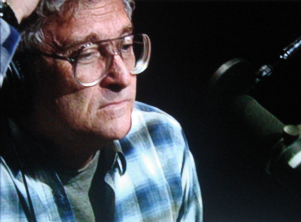
Finally, as if all that wasn’t enough, the bursting Publicity section holds over ten minutes of promotional material, including a Character Interview with Woody and Buzz by John Culhane, two Theatrical Trailers, four TV Spots, two one-minute video galleries of movie posters and the real-life merchandising inspired by the characters. The section ends with no less than 15 Toy Story Treats, each running between a few seconds and a couple of minutes depending on their content. Included are what amount to tiny toy stories that played as television bumpers, though there are some funny little gags to be found amongst, it has to be said, quite a bit of just average business, though the second – and this disc – ends with the ludicrously bang on target Buzz Lightyear Commercial in a fullframe version.
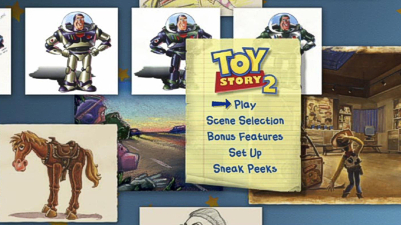
The Toy Story 2 Blu-ray Disc again now redundantly keeps its own Toy Story 3 sneak peek, this time a little more in-depth at four minutes and focusing on The Characters, but still full of snippets that we had seen in the trailers anyway. Of the other newer features, we’ve another NASA-endorsed spot, Buzz Lightyear Mission Logs: International Space Station (3:43), which looks at the space station in action and what makes it tick; all interesting, but tenuously linked to the movie and with far less Buzz action figures floating through shot. We meet more of the Studio’s personnel in the Paths to Pixar: Technical Artists (4:24) featurette, including co-founder Bill Reeves, and there are three more Studio Stories. Toy Story 2 Sleep Deprivation Lab (1:25) looks at the incredible job the crew did in pulling together the movie in seven to eight months after the first version was rejected, leading to long working hours and a vast lack of shuteye!
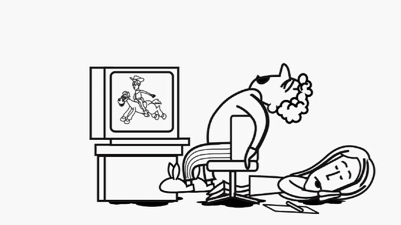
Studio Stories: Pinocchio (2:15) offers up a very twisted take on life at Pixar before the move to their custom-built facility in Emeryville, and if the tight schedule wasn’t enough to contend with, Studio Stories: The Movie Vanishes (2:32) reveals the hysteria that broke out when the equivalent of the “delete button” was pressed on the Toy Story 2 files and various elements began to disappear, literally wiping out all the work that had been done on the movie! The basics of animation are explained in Pixar’s Zoetrope (1:58), before going on to display one of the most elaborate and truly impressive examples of this early animation device in action. An extremely touching tribute is paid to an animation great in Celebrating Our Friend Joe Ranft (12:46), the brilliant storyman who was taken far too soon in an automobile accident. Ranft contributed to the re-emergence of Disney animation in the 1980s and ’90s before adding so much to Pixar’s early films, and here his colleagues’ memories are mixed in with Ranft’s own takes on his craft.

Toy Story 2 came along right at the beginning of the DVD boom, and so a deluxe LaserDisc edition was never released, but the original Ultimate Toy Box and later DVD edition made up for that with a host of supplements that covered the movie’s production, pretty much all of which have been carried over to make up the Classic DVD Bonus Features from the 2000 and 2005 releases. First up is another gathering of director Lasseter and co-director Unkrich and their team for an extremely solid Audio Commentary that really delves into the production and offers up a heap of information that doesn’t get repeated elsewhere. Although short at eight minutes, Making Toy Story 2 does a good job of expressing how the filmmakers wanted to respect the work that had been done on the first film while acknowledging the need to expand upon the concept, although unlike the exposition of the rejected version of the first movie, there’s unfortunately nothing on the direct-to-video roots of this sequel.

A John Lasseter Profile (3:02) is less about the films’ director and more a puff piece about the Disney/Pixar relationship and the cast and crew gushing about what a great job John does. Cast Of Characters (3:28) is pretty much more of the same, this time focusing on the voices behind the animated personalities. In the Toy Box, there’s a bunch of fun stuff, from the fullframe look at the film’s end credit Outtakes (5:27) and the hysterical Jessie’s Gag (:60) animator’s joke, to a light discussion on Who’s The Coolest Toy? (3:19), a bouncy Riders In The Sky Music Medley (3:11, on the stage of Disneyland’s Golden Horseshoe Review), and a video gallery of Autographed Pictures of the characters that runs :45 seconds.
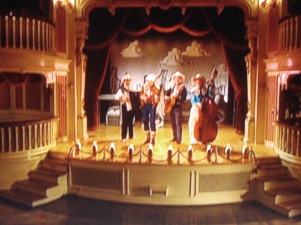
Deleted Scenes serves up a small helping of two sequences dropped from the film, though again at just four minutes including an intro there’s nothing near the amount featured for the first film, and a distinct lack of any acknowledgement of the DTV origins means we still don’t get any kind of insight into the initial version that got turned around during the production process. There’s a little bit of overlap between the first film in the Design section which, in its video galleries of character concepts (16:43) and 3D Visualizations (11:02), replays some of the development for the first film, though of course the new characters and locations get various turnarounds and flythroughs, and there’s a look at the Color Scripts (4:30) for the tone of scenes in the film.

Production highlights some of the elements lacking so far, including a look at the props created for Designing Woody’s Past, Making Woody’s Roundup marionette animation, and a Production Tour that again covers the stages of animation as produced by Pixar. Some Early Animation Tests, and the tricks used for the film’s Special Effects are revealed, and an International Scene shows how Buzz’s Stars and Stripes-backed motivational talk in the movie was rescored and appeared as a “One World Anthem” for release around the globe. All in all, this collection of clips plays for a total of 13:41.
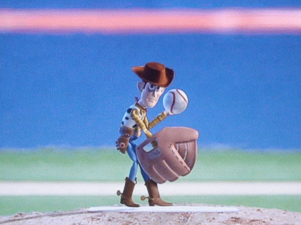
There’s more alternate soundtrack elements in Music & Sound, a 14:08 collection of clips that include Gary Rydstrom speaking again about his work on this second film, a discussion of Randy Newman’s songs and another Woody’s Roundup music clip. An audio demo for Jessie’s Song (as it was initially titled) has Newman capturing the tear-jerking nature of When She Loved Me’s music and lyrics. Finally, in the selection of Publicity materials (8:32), there’s another Character Interview with Woody and Buzz, two Theatrical Trailers (including the hilarious Little Green Aliens teaser), four TV Spots, and a one-minute video gallery of movie posters. The section ends with a fun 19 second Baseball Woody clip that has the cowboy serving up a curve ball right into camera, bringing this disc to a close.

The Toy Story 3 Blu-ray Disc package awards two BDs split between the feature presentation and its supplements, delivering a good few hours of immersive bonus content in the way the packed Pixar DVD collectors’ editions of the past used to do. Despite the fact we’re going around for the third time in this series, it still all feels rather fresh even if it doesn’t quite surprise with any rare footage or insights that the greatest special editions manage to locate, mostly due to its assemblage during the film’s production. The main menu itself is worth left running for a couple of minutes, as Mr and Mrs Potato Head fumble around waiting for the viewer to make a selection, and there’s one of Disney’s customary Screen Saver options to save the menu burning in on your display.
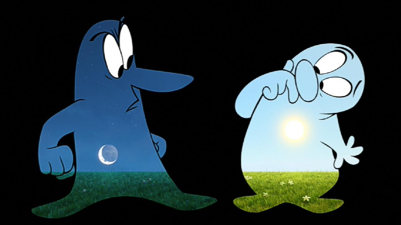
Featured with Toy Story 3 in its theatrical run, Teddy Newton’s absolutely wonderful animated short Day & Night is also included on the main feature’s disc, depicting what happens when two opposing characters clash and discover they have more in common than they first think. With some terrifically whimsical and witty gags (the waterfall makes me laugh out loud every time), the short is another gem in Pixar’s collection of such films, the only disappointment here being that it isn’t featured on the 3D disc with the movie and doesn’t come accompanied with a commentary, in the way previous Pixar shorts have done occasionally in the past, though some background is provided elsewhere in the set.

Continuing the series begun on the Toy Story and Toy Story 2 Blu-rays is episode three of the Buzz Lightyear Mission Logs: The Science Of Adventure. It’s interesting, but tenuously linked to the character by having a plastic figure Buzz floating through the International Space Station via NASA footage. Directly linked, with a fun peek into production, the six-minute Toys! featurette speaks to production designer Bob Pauley about the numerous toys, new and old, that appear in the film, as well as how the classic characters were re-rigged from the ground up to take advantage of improvements in CG techniques since the first film’s debut.
On to the Bonus Material disc, where the majority of the extras are to be found, though it may be simpler to bypass the many different configurations (a grouping of extras for family viewing, for film fans, for those wanting to play the disc’s game, or to head right to the publicity section) and go for the FastPlay options that customizes your viewing experience anywhere from the full list of supplements, to squeezing things down to a two-hour, half-hour or ten minute runtime. The FastPlay option is the best way to see everything, though it’s frustrating that individual sections can’t be accessed from this menu, since the Family and Film Fans selections don’t include everything.

First up is the feature-length Cine-Explore visual commentary track with director Unkrich and producer Darla K. Anderson – and, no, that’s not a typo: the entire movie is indeed completely repeated again for some reason, at pretty much the same bitrate as on the first disc, and I wonder if the original release was at some point due to contain the 3D edition of the film first time out, since the configuration is completely confusing, as surely the picture-in-picture aspects could be switched off to let the movie play as it does on the first disc anyway? With the same audio options available, I was more than a little lost as to why the film had been included twice in the original BD set, and admit that it’s strange they’ve repeated the trick here and not simply added Day & Night to the 3D disc for some added value there, while being able to drop what is basically a superfluous platter.
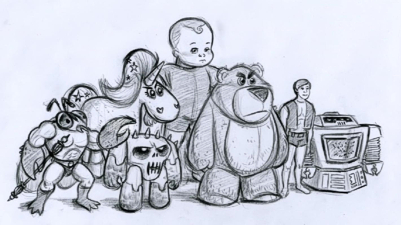
Anyway, no matter, since Unkrich and Anderson’s commentary is a good one, even if it was recorded before the production was even complete and lacks the perspective that a retrospective track usually provides. But there’s something to say for a discussion that comes right at the tail end of making the actual movie and, as such, their remarks are rife with the right-here, right-now battle scars of creation. The comments also confirm some of my own thoughts about what works in the film, and what I didn’t feel was fully nailed, with the reasons provided often making sense in my reactions to the finished product, which added a layer of interest for me, and the visual additions pack in absolutely everything from concept art, alternate concepts, storyboards, design, pre-viz, animation tests, stills, footage…the list goes on. More than anything, the reasons why Pixar are Pixar are again revealed in the sheer amount of thought that obviously goes into each and every nuance, and does that great thing that the best commentaries do in providing a re-appreciation for the final result.

Moving on, and the sheer wealth of production featurette supplements means you’ll need a long evening put aside to fully enjoy them all – and they’re all worth exploring, covering practically all areas. The Gang’s All Here (10:24) reunites the voice cast and introduces the new characters, including a returning – and amusing – Don Rickles, and touching on the continuation of Slinky Dog after Jim Varney’s untimely passing on, while next is a look at the film’s first and final sequences broken down into behind the scenes chunks. Roundin’ Up A Western Opening (5:42) develops the original alternate “Showdown” opening to what was seen in the final film, while Goodbye Andy (8:02) naturally explains the farewell moments between the now young man and his passing on his beloved toys to an enthusiastic new owner.
Accidental Toymakers (3:56) looks at the remarkable “reverse engineered” trip from screen to store shelf for the filmmakers as they become, as Unkrich says, “toy designers” following the success of the first film and the creations of new personalities for Toy Story 3. Screenwriter Michael Arndt discusses his craft in Beginnings: Setting A Story In Motion (8:13), covering Pixar’s story development process and how the Little Miss Sunshine scribe plugged into that culture, although the over-analysing the Studio’s previous pictures actually seems to dumb them down and formularize them a bit. More interesting is Bonnie’s Playtime: A Story Roundtable (6:26), which properly dissects this moment, post-making, with Unkrich and his crew returning to how the apparently troublesome sequence was finally shaped.
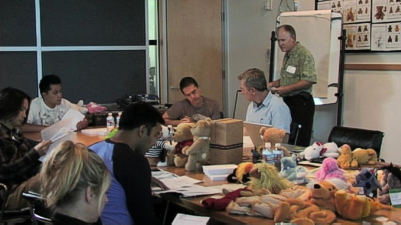
Delving further into that process, the Life Of A Shot (6:57) initially promises to explore the various elements to be found in just one single set-up of the film, on screen for a scant few seconds, but instead it reverts to documenting the props, styling and designs of the opening sequence, drawing attention to aspects to most audiences would probably take for granted. Somewhat randomly thrown into the proceedings, the two-minute Making Of Day & Night gathers the production crew, including director Newton, to reminisce about the creation of the short, and although it’s nice to have something to place the short in context, it’s a shame that they only relate how hard it is to accurately describe the short as opposed to how they managed to pull the very tricky melding of traditional and computer animation off, the final end card revealing it to be little more than promotional fluff advertising the short “in theaters with Toy Story 3 June 18”.
Simple but effective for a bolt-on inclusion, the Toy Story Trivia Dash game offers two players the chance to test their knowledge either on the entire trilogy or just the third instalment as either Woody or Buzz, and since it doesn’t try to be overly showy or clever, it remains enjoyable over its four levels, the entering the players’ secret scores in the final heat a good use of Blu-ray’s added interactivity. We’re back to the featurettes for A Toy’s Eye View: Creating A New Land (5:19), though this is more a look at the spin-offs from the movies, specifically how the characters were adapted for the Disney theme parks, by way of Buzz Lightyear’s Astro Blasters and Toy Story Mania attractions, to the development of the new Toy Story Land, though the logistical talk means this is a proper peek into the construction and not just a fluffy promo piece.
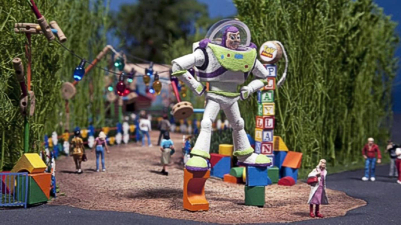
As if Unkrich and Anderson’s feature-length comments weren’t enough, a completely technical observation can be found in the Beyond The Toybox alternate commentary track that gathers members of the animation crew. Here, a lot of informative technological talk peppers the discussion, and geeks will be delighted with the detailed exploration of light, color, textures and simulations, as well as how certain shots were achieved, but it’s otherwise a fairly dry track that general viewers will probably, and understandably, want to give a miss and without any picture-in-picture embellishments, I’m again perplexed why the movie has essentially been included twice (three times including the 3D!) in this set, but there must have been some valid reason.
Various promotional spots feature next, from a four-minute Grab Bag that pulls together various promotional spots that anticipated the premiering of the movie, from Mrs Potato Head talking loudly in a theater, to various plus for the 3D experience, and three of Ken’s Dating Tips (1:30), to the brilliantly executed Lots-O’-Huggin’ Bear Commercial (:30) and Lots-O’-Huggin’ Bear Japanese Commercial (:30) that both run like a lost pieces of footage thankfully saved for posterity from the early 1980s via a crummy old VHS recording. A joke Making Of The Lots-O’-Huggin’ Bear Commercials (1:28) shows some raw footage from the live-action shoot, though it would have been cool to have a serious discussion on this process even if it’s interesting to note the “Happy Bear” marker on the clapperboard; a neat way for Pixar to keep the character name a secret until it was ready to reveal his true identity.
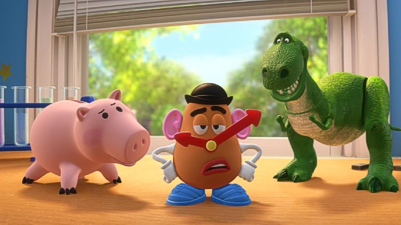
The Publicity offerings continue with a series of promo spots: an Internet Chat (1:00) between Woody and Buzz, the scary movie trailer-like Security Cam teaser (1:12), and the high-tech Gadgets (:54), while Dancing With The Stars At Pixar (2:20) shows how the choreographers of the hit show assisted with Spanish Buzz’ Latino-hot dance moves. A TS3 Silence Trailer (:40) repeats the Potato Heads’ movie theater disruption, and the TS3 Antipiracy Trailer (:56) does what it says on the tin, while a welcome inclusion, after so many titles left them off their respective discs, are a number of Theatrical Trailers for the film, offering up the Teaser (1.40), Trailer #2 (2:20), Trailer #3 (2:25), and Japanese Teaser #1 and Trailer #2 (3:46 combined), with some Character Intro (2:00) interstitials and a 25-image Poster Gallery thrown in (though the lack of any other developmental galleries is greatly lacking).
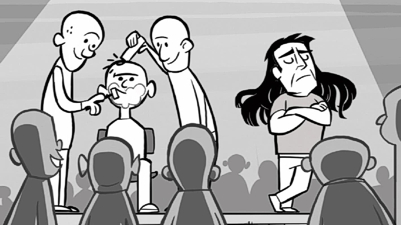
Continuing the Paths To Pixar mini-documentaries from the previous discs, Editorial (4:38) shines Luxo’s lamp on Pixar’s picture cutters, while three semi-animated Studio Stories asks Where’s Gordon? (2:16), visits the Studio’s Cereal Bar (1:26) and reveals the hairy business behind the making of the movie in Clean Start (3:05). Finally, instead of the principal cast and crew come together again to reflect on the production experiences of making Toy Story 3, the disc’s Epilogue (4:23) is actually a full-frame rendering of the closing credits moment of the film, now viewable up close.
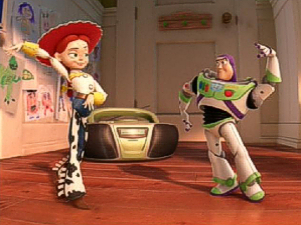
As in-depth as the bonus features are in the Toy Story 3 set, their access isn’t always as simply set out or grouped together as usual from the menus, there’s a reliance on pre-release promotional clips, and Pixar’s customary inclusion of production concept and development art is a noticeable omission, now mostly covered in the Cine-Explore feature, but not available for closer inspection despite the space on the first disc. Nevertheless, there are a good few hours of features to wade through here and, third time around, there isn’t really the need to repeat any basic information we have probably learned from the Special Editions for the first two films.
On those discs, one could make the point that not every supplement from the LaserDisc, Ultimate Toy Boy, or 10th Anniversary editions have been ported over to Toy Story and Toy Story 2’s BDs, but there’s very little that’s been left out which isn’t to be found elsewhere (the originally included shorts Luxo Jr and Tin Toy, for example, are now grouped on a disc of Pixar Shorts of their own). Of course, real collectors will probably hold onto their LDs and Toy Boxes anyway, but there’s a ton of stuff here that should please everyone, even if it would have been neat if the compilers had gone the extra mile and converted what footage could have been recreated (the trailers, galleries, etc) in HD.

Across all the discs, the Sneak Peeks have been updated, and it’s nice to see Disney bothering to do this now after simply bundling in unsold copies of previous titles in their reissued Blu-ray/DVD combo packs before. The previews include looks at Disney’s All-Access online concept, Pixar’s next, Brave, the Lady And The Tramp Diamond Edition, Disney’s Movie Rewards program, ABC Family, The Lion King on stage and its two direct-to-video sequels, The Secret Of The Wings, and the Pixar-inspired Planes, set to take the Cars world into the air in 2013 and looks more fun and like it “works” in a way that Cars never did for me.
All three individual sets come loaded with standard definition DVDs which, in the cases of Toy Story and Toy Story 2 include the newer supplemental bonus features and audio commentaries only, while Toy Story 3 has the Day & Night short, audio commentary, Buzz’s Mission Log, Paths To Pixar: Editorial, the three Studio Stories, and the Toys!, The Gang’s All Here! and Toy Story Land featurettes. Also included in all three sets are Digital Copy discs, offering a portable file copy of each movie for playing in your choice of format.
Case Study:
Reflecting the fact that, although they’re presented in state of the art 3D, these Toy Storys are the very same original films as we remember them, it’s a really unique and welcome return to each sleeve’s front cover for the initial theatrical posters for each film (though I’d have preferred the group of toys shot for TS3 as opposed to just Woody and Buzz). These have been updated with Disney’s dimensional lenticular slipcovers that make a big show of the 3D presentations inside each packs. Unlike before, the “continuation” of the series hasn’t realty been carried over to the artwork, but under the slips, each sleeve reproduces everything again, and inside the thicker Blu-ray cases, there are various inserts for Movie Reward, Blu-ray 3D and upcoming product.
Naturally, each case also holds the bundled-in DVDs and Digital Copy discs along with the BDs, the first two films being four-disc sets (Blu-ray 3D, Blu-ray, DVD and Digital Copy) and the third adding one for a five-disc set (Blu-ray 3D, Blu-ray Feature, Blu-ray Bonus, DVD and Digital Copy). A multitude of configurations, including an Ultimate Trilogy Toy Box were released with the three films’ debut on Blu-ray, but the 3D editions are only available with all the previously released content in these new packages. For those with all those discs already and ready to balk at having to shell out to grab the 3D editions, Disney has been kind and issued a three-disc Complete 3D Toy Story Collection set that includes the 3D discs ONLY…a nice way to update without the heavy cost.
Ink And Paint:
I’m not sure (or can’t remember) if the first two Toy Story films were completely re-rendered stereoptically in 3D or if they were the result of a post-conversion, but compared to the natively produced 3D third film the results are pretty indistinguishable. These are the reasons to particularly pick up these new editions, though whether you feel the need to re-buy to experience any or all of the Toy Story films will be down to how much you love the movies or, indeed, the 3D format itself.
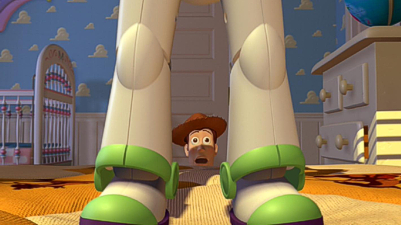
Toy Story: Not having originally been designed for 3D, it was interesting to see how well the first Toy Story measured up, and I can only suggest that the high level of dimensional activity in the frame is down to how much depth the original film contained. Breaking away from decades of “flat” animation artwork, Toy Story was able, almost effortlessly, to offer the kind of perspective animation that was expensive and time consuming in traditional animation, and the filmmakers pushed these aspects to the full, making sure we experienced point of view angles, moving camera shots and lots of the fully rounded characters inhabiting an authentic three-dimensional space.

So adding an actual third dimension only enhances what was always there, but it does so by plussing those elements, leading to some really quite exceptional 3D shots that have been achieved, as a result, almost by “accident”, as it were. Buzz’s arrival is more imposing to Woody, and his swoosh around Andy’s room restores the spectacle that has perhaps worn off after seeing the scene over and over in the years since. Likewise Sid’s room is more atmospheric, and Woody and Buzz’s final chase to catch up with Andy is just more expansive…all of it as impressive as it was when we first saw it despite the advances in animation.
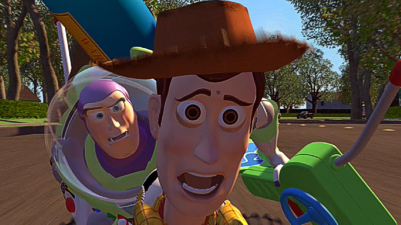
On the regular “flat” Blu-ray, Toy Story also looks nothing short of spectacular, the image quality being essentially as good as a brand new computer generated film. My only gripe is that the original opening of the film has been nothing short of ruined (here and for the 3D edition) to place the new Disney castle and Pixar logos on the front, totally scrapping Randy Newman’s intro music which, very obviously as heard underneath the 1996 LaserDisc audio commentary ported over here, could have accompanied the Pixar logo at least rather than coming in with a very amateurish cut.

Toy Story 2: If the first film’s retro-3D’s highlights are largely based on the original animation’s intent to push the perspectives inherent to computer animation to new depths, then Toy Story 2 succeeds in getting the balance of depth just right. Dialing back the amount of in your face shots, the film – Pixar’s third – proved how much the filmmakers had come on over just three movies in terms of cinematic staging, and so there’s more use of the computer as a storytelling tool this time out, as opposed to also showcasing the technique. As such, there’s less popping out of the screen, but that doesn’t mean it’s still not a fun 3D experience.

Computer animation continues to be the best thing about the current rash of the 3D gimmick – and whatever else you think of the process, it is a gimmick – and I can’t say I’ve been a fan of any live-action I’ve seen in the format. 3D doesn’t make movies better (and certainly not bad ones), but there is something to be said for renewing one’s appreciation of a film via a fresh presentation. Just like the feeling of watching the likes of Snow White or Pinocchio again for the first time through the astonishing digital restorations presented on Blu-ray, good 3D presentations can literally give us a new perspective, and I must say I was quite impressed here.

On the flat regular BD, Toy Story 2 looks, dare I say it, even better than the first film’s transfer, thanks not only to more elaborate design and production, but also due to the restoration work undertaken in converting the movie to 3D for theatrical reissue (it doesn’t hurt that the film was also lauded for being the first to have been produced and directly delivered digitally on original release either). A nice touch is that the end credit “outtakes” are now incorporated onscreen, making this the definitive edition of the film. In 3D or not, Toy Story 2 looks great.

Toy Story 3: It’s strange to find that each film’s amount of 3D seems to diminish in each successive outing, but that does to seem to be the case here. After the really front-heavy effects of the first film, and the second’s good balance of elements that emerge from the screen but also retreat back into it, Toy Story 3 pretty much abandons throwing almost anything out into the audience, as it were, and largely just goes for stretching out the illusion of depth in the frame. This was the first film in the series actually designed with 3D in mind after Pixar previously experimented with the process for Up the year before.
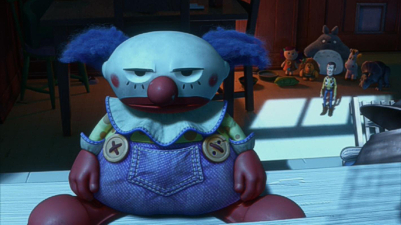
Director Unkrich professed he wasn’t a fan of 3D elements that sprang out at the audience, and it’s interesting how he has used the format to suggest depth in his environments, the downbeat tone of some of the scenes made all the more desolate. The enhanced spacing is impressive, but the usage of the frame almost exclusively as a “window” on the locations doesn’t actually add up to much of a “fun” aspect for the audience. Toy Story 3 was also one of the first animated films I saw theatrically in 3D and I wasn’t too impressed: instead of really adding to the experience like the first two films, it’s just kind of “there”.
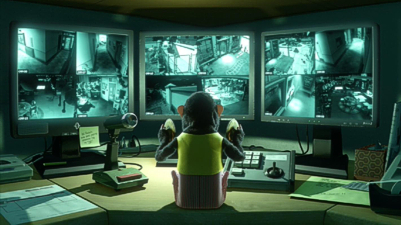
On the regular flat BD, no-one should find anything to complain about the perfect digitally produced images, especially since the movie has the entire first disc to itself. If ever there was a release that suggested it was intended as a 3D title first time out, it’s Toy Story 3, since even with the supplements on another disc the movie is presented at the same bitrate, not making the best use of space on the movie-only disc but seemingly not to actually matter. Even with the Cine-Explore and other supplements, the images are sublime and again exhibit much dept even without the “real” 3D.

The DVDs for each movie do what they can as well, albeit obviously just in a regular flat format, providing a naturally softer image without the high resolution of HD, but looking rock solid and uncompressed, with only a smattering of limited extras to draw any bits away from their respective movies. The now-included Digital Copy discs in each pack present the films for portable device viewing, without the addition of any supplements.
Scratch Tracks:
Also the benefit of some tweaking for their theatrical reissues the first two films’ DTS-HD 5.1 Master Audio soundtracks exhibit the kind of mixes that have come to be another of Pixar’s trademarks. Highly detailed, exceptionally well recorded and perfectly mixed, the Studio’s relationship with George Lucas continues today through the top-end tracks produced at Lucas’ Skywalker Sound, and although the THX badge of approval that adorned previous LD and DVD releases isn’t a requirement in the new Blu-ray world, you can be sure those levels are well reached here and actually surpassed.
Bass separation is particularly impressive, especially in the rumbling road crossing scene in the second film, and the intricate movements of the toys have much more clarity even if they still (quite rightly) don’t call attention to themselves. The third film adds an extra couple of speaker outputs for a full and impressively enveloping DTS-MA 7.1 soundtrack (as well as a 5.1 DTS option), the film easily making for top-line demo material, even if there aren’t really any of the stand-out “big” sequences like there were in the second that would provide the content for such a showcase.

The sound on the DVDs is also more than serviceable (in the quick checks I made), with additional dubs and subs available (in various languages and formats across all discs) covering English, French and Spanish Dolby Digital EX among others, although be noted that there are available language differences between the US and Canadian DVDs in these editions.
Final Cut:
If you don’t already have any of the Toy Story films on Blu-ray (and who can’t!?) then Disney’s upgraded combo packs make a good stab at convincing us these are the editions to own, with everything from the main features in decent 3D and exceptional high-definition, supplements that essentially bring together everything of real worth released in the past, plus standard definition DVD and Digital Copy discs of the films for additional viewing around the home or on the move. Even if you’re not 3D-equipped yet there’s a fair argument that these packs offer the best value for money, especially at the lower online prices, and that they have pulled over the nuts and bolts from previous releases means there’s nothing missing.
Pixar have been quite cautious with their conversions to Blu-ray, choosing to go with nice helpings of new extras as could be hoped for and a fairly complete archive of “classic” supplements that pretty much nail things on the head. Toy Story 3 is the slight weak link here, fine entertainment to be sure, but the freshness is missing, repetition certainly creeping in, and a (very) slight air of desperation in where to take the characters. It may be that it doesn’t get repeated viewing more than the first two films, but like The Godfather series, you just have to own it to see how it all turns out, and these discs – also available in the 3D Trilogy set without the extras – are the way to see them!
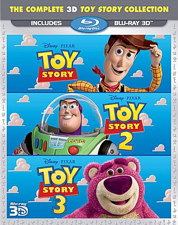 | ||
 |









